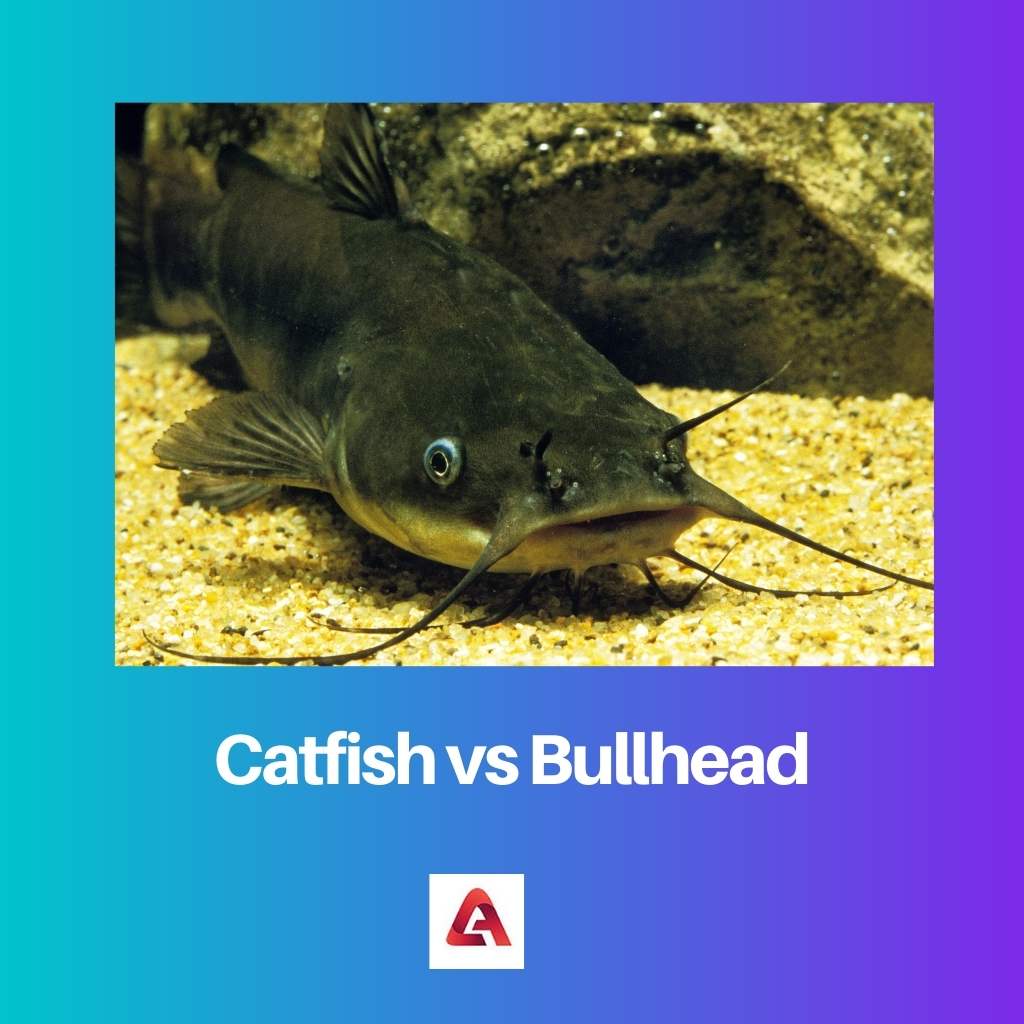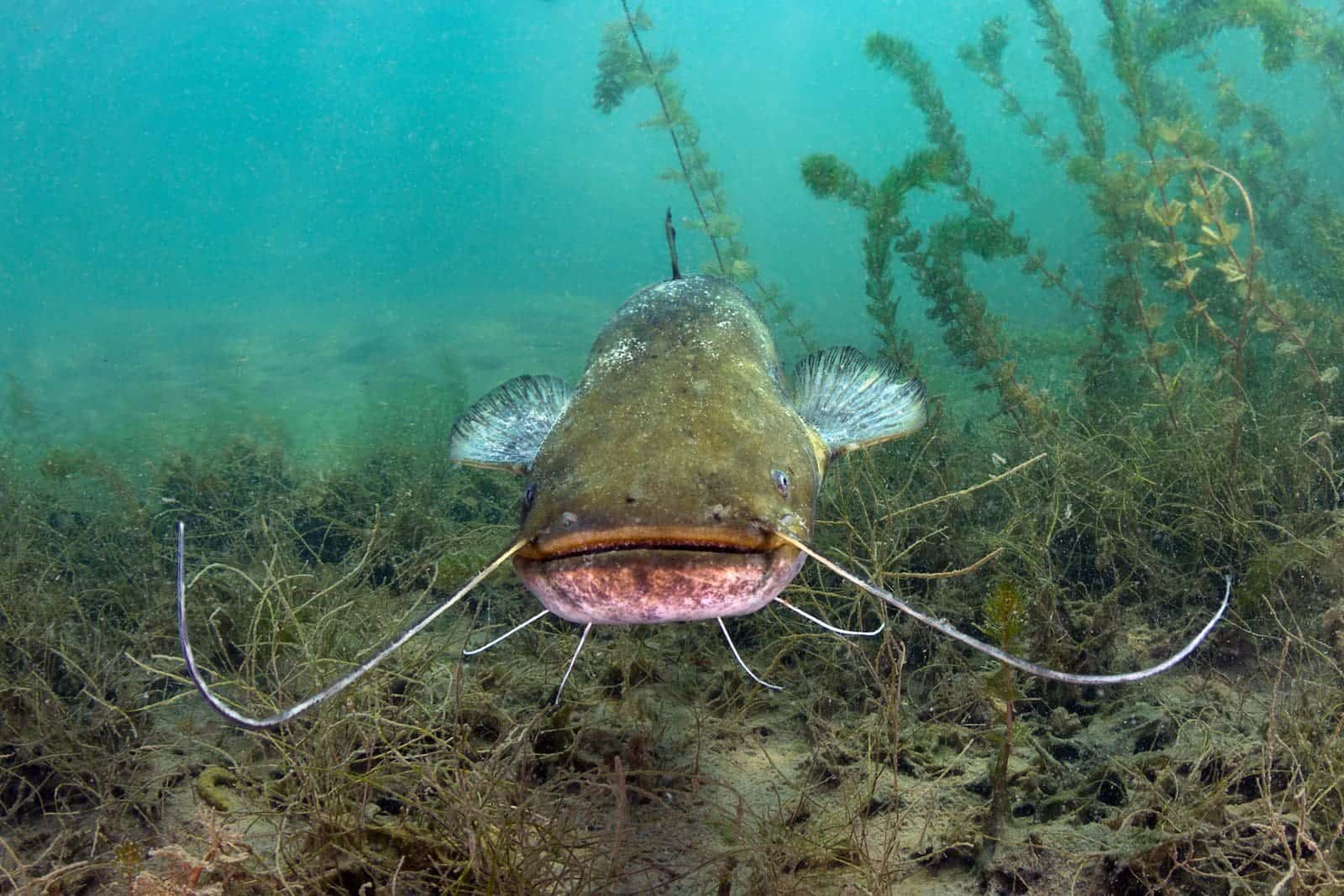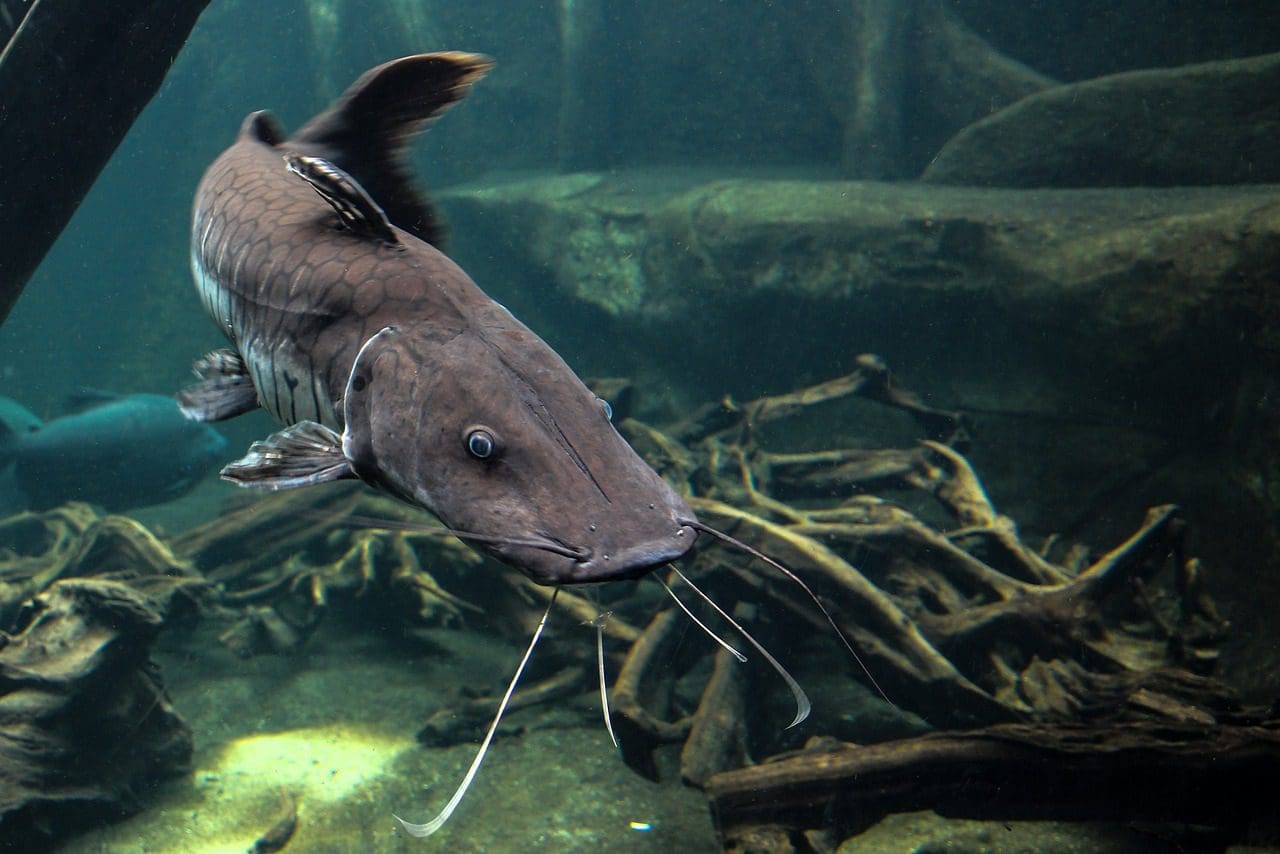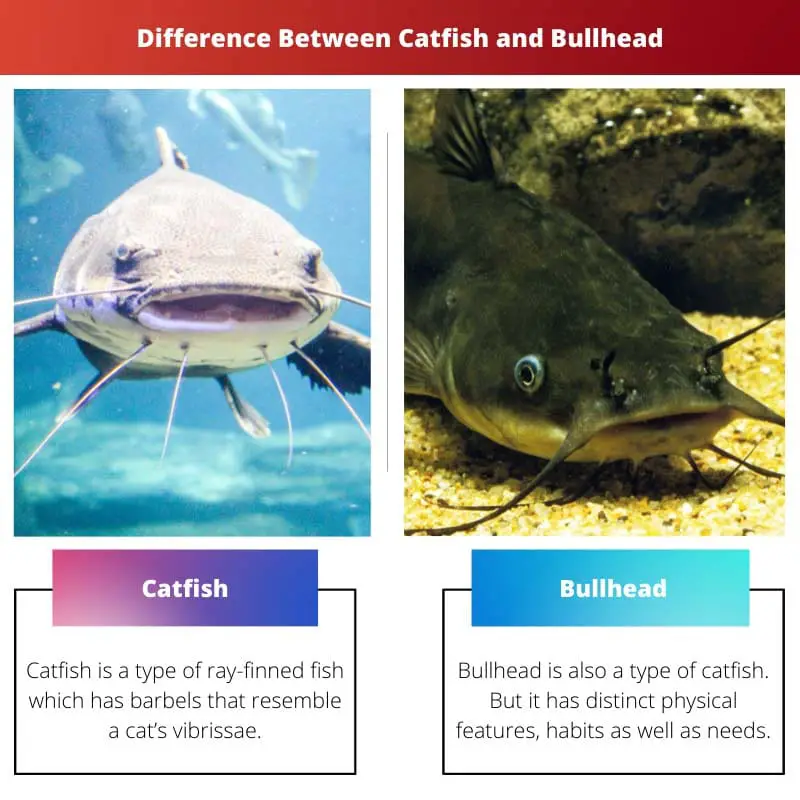There are about 34,300 known species of fish in the world. Fishes have high nutritional value and are a very popular source of food.
Either hunted or cultivated in farms and ponds, fishes are the primary source of livelihood for fishermen. In addition to this, they have also been identified as an auspicious symbol for religious works.
Key Takeaways
- Catfish are known for their distinctive barbels or whiskers, while bullheads lack these features.
- Catfish have a larger, wider head and body than bullheads, which are smaller and more compact.
- Catfish are commonly found in warmer waters and are farmed for food, while bullheads prefer colder waters and are primarily caught for sport.
Catfish vs Bullhead
The lifespan of Catfish is 10-20 years, and that of a Bullhead is 5-10 years. The size of catfish is 12-24 inches and 15-40 pounds, while that of a Bullhead is 8-14 inches and 1-5 pounds. Catfish are olive or grey in colour, and the younger ones have dots, while Bullhead is yellow or brown in colour.

Catfish are sleeker in appearance, having a split tail. They range from brown to blue in the colour of their backs, and the stomach part is silver-white.
There are several varieties and species of catfish, which have similarities as well as dissimilarities. Omnivorous in nature, catfish feed on insects, snails, small fishes etc.
On the other hand, Bullheads have a broad body with a square-shaped tail. They have dark brown backs, and their belly is yellowish. They have a natural defence mechanism, which is done through the spines on their bodies.
Just like the catfish, they are omnivorous. However, they do not feed on small fish as much as catfish do.
Comparison Table
| Parameters of Comparison | Catfish | Bullhead |
|---|---|---|
| Species | Catfish is a type of ray-finned fish. | Bullhead is a type of catfish. |
| Facial Appearance | It has a narrower mouth. | It has a broad and flat head. |
| Body | Its body is sleeker. | It has a compact body. |
| Tail | A deep split tail is present. | The tail is in a square shape. |
| Length | It can go up to a maximum of 20 inches in length. | It can reach only up to 14 inches maximum. |
| Body Weight | It does not exceed 100kg. | It can merely weight 1kg. |
| Habitat | It resides in shallow, running water. | It resides in stagnant water and can tolerate low oxygen levels. |
| Commercial Purpose | It is more widely used for commercial purposes. | It is not very widely used. |
What is Catfish?
Catfish is a type of ray-finned fish which has barbels that resemble a cat’s vibrissae. The prominent barbels are not found in every catfish.
Catfish can reach up to very large sizes. Due to this, they are great for commercial purposes. They belong to the order Siluriformes and have several families under them.
Catfish are found inland or in oceanic waters. They are known to reside in all the continents once except Antarctica. More than half of the species of catfish reside in the Americas.
Also, they are found in freshwater. However, they like to stay more in shallow, running water bodies. They come in various body shapes and sizes, although the flattened head is common.
The fishes have a narrow mouth that can expand when required. They gulp their food instead of cutting or biting it. They are omnivores and feed on insects, seaweed, small fishes etc.
Including their deep split tail, the body length can reach up to 20 inches, which is considered one of the longest of sizes among bony fishes. In terms of body weight, catfish rarely exceed 100kg.
There have been instances of very heavy catfish getting caught for real.
Catfish is a vital part of the ever-growing fish trade in the world. They are caught and farmed popularity in Asia, Africa, North America and Europe. Coming to its taste, some find it delicious, while others consider them watery and tasteless.

What is Bullhead?
Bullhead is also a type of catfish. But it has distinct physical features, habits as well as needs. It possesses barbels as all the catfish do and has a broad head and squared tail.
It does not reach as much in body length as the catfish. The dorsal side is dark brown, and the ventral side is yellow. They belong to the order Siluriformes too.
Bullheads are found all around the central parts of the United States. Stagnant or slow-paced water having soft bottoms are their primary habitat. They assemble in confined spaces, especially under dams.
They are very tolerant and can also adjust to low oxygen levels. Large parts of Europe are inhabited by these fishes. Being omnivorous, they feed upon seaweed, crustaceans, snails etc.
Bullheads have an interesting hibernation technique which they practice to survive in low temperatures. When winter arrives, they decrease their food intake or stop eating and bury themselves near the shoreline.
They are smaller in size, can reach up to a maximum of 8 to 14 inches and can merely go around 1kg in terms of body weight. The largest species of bullhead is around 24 inches in length.
The fishes possess spines at the bottom parts of their dorsal and pectoral fins. These spines come to aid for defence by cutting predators.
Bullheads are not very widely preferred for commercial purposes as they compete with other catfish for food. However, they are excellent in taste.

Main Differences Between Catfish and Bullhead
- Catfish have a slimmer appearance, while bullheads have a broad and flat head.
- Bullheads have a squared tail, and catfish have a split tail.
- Catfish is longer and heavier in comparison.
- Bullheads can tolerate low oxygen levels better.
- Catfish live in shallow water, while Bullheads live in stagnant water.





